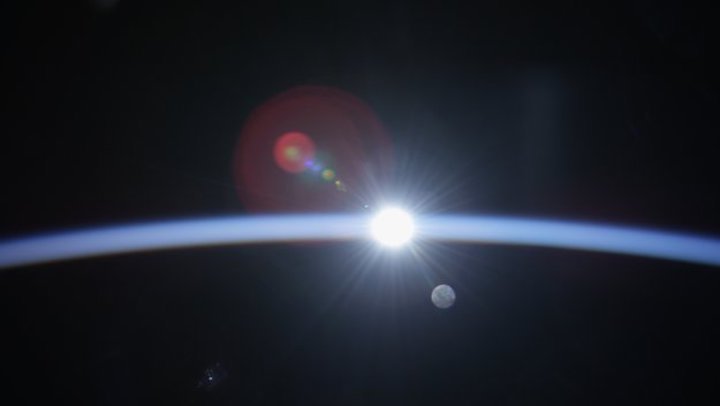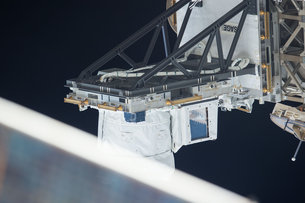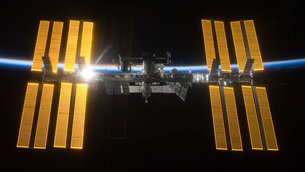21.03.2018

With ESA’s help, the latest atmosphere monitor on the International Space Station is delivering results on our planet’s ozone, aerosol and nitrogen trioxide levels. Installed last year on the orbital outpost, NASA’s sensor tracks the Sun and Moon to probe the constituents of our atmosphere.
The Station takes only 90 minutes for a complete circuit of our planet, experiencing 16 sunrises, 16 sunsets, and sometimes moonrises or moonsets, every day. By observing the Sun or Moon through the atmosphere, the Stratospheric Aerosol and Gas Experiment – SAGE – measures the quantity of ozone, aerosols and other gases.
The readings are complementing the long-term monitoring by Europe’s Copernicus Sentinel missions: launched last October, Sentinel-5P is the first in a series of Sentinels focusing on the atmosphere.
As the Station orbits, SAGE is continuously turned to point in the right direction by ESA’s six-legged Hexapod.
Using position information from the Station, Hexapod’s computer calculates the movements of its six legs to track the Sun and Moon in the few seconds of their setting and rising. This will happen dozens of times each day over years.
SAGE was installed in February last year and the first results are now being released to the public. The results will be issued monthly, with the quality improving as more measurements are added.
“The installation and setting up could not have gone better and we are happy to see Hexapod working perfectly to keep SAGE pointing in the right direction,” said ESA’s Hexapod project manager Scott Hovland.
“The Hexapod and SAGE collaboration is an exemplary transatlantic cooperation and we are very happy to see the first results coming in.”
ESA has a history of tracking the Sun from the Space Station: working for more than nine years, its SOLAR facility created the most precise reference on the Sun’s energy output ever.
The next ESA sensor to be launched to the Station is the Atmospheric Space Interactions Monitor, which will point straight down at Earth to investigate high-altitude electrical storms.
To be attached next month, it will capture images of elusive electrical discharges called red sprites, blue jets and elves. These powerful electrical charges can reach high above the stratosphere and have implications for how our atmosphere protects us from space radiation.
Quelle: ESA



